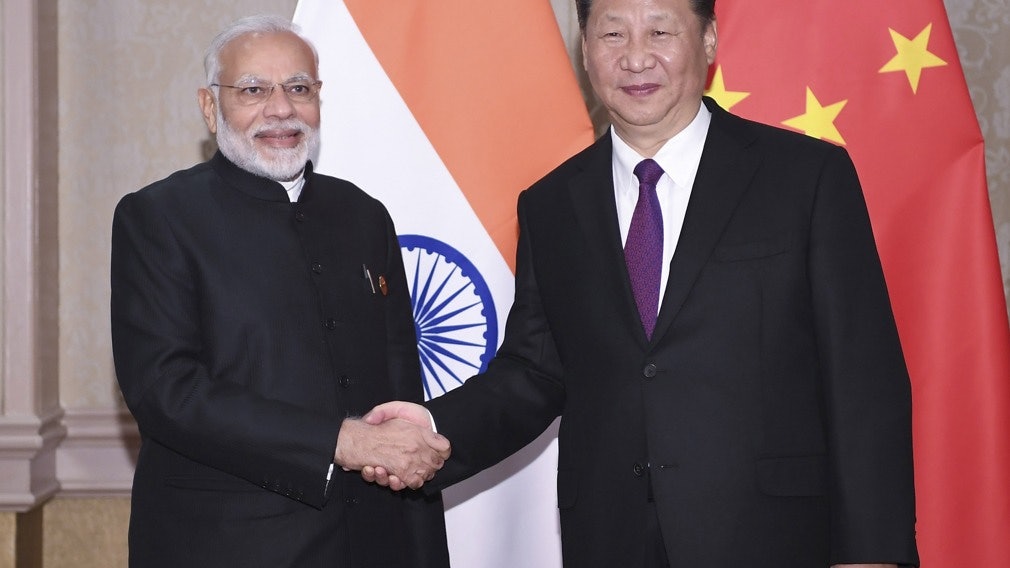Xi Jinping held a brief meeting with Indian Prime Minister Modi on June 13. It is worth noting that the propaganda techniques of this meeting between China and India have shown great differences.
Chinese President Xi Jinping held a brief meeting with Indian Prime Minister Modi during the Shanghai Cooperation Organization meeting held in Kyrgyzstan on June 13 local time. It is worth noting that the propaganda methods of this meeting between China and India have shown great differences.
Those familiar with China’s foreign propaganda and the politics of the country know that the Beijing government’s dissemination method when it announced the leaders’ visits to other countries’ meetings or the details of the leaders was based on the official website of the Chinese Ministry of Foreign Affairs and the official website of the Chinese Communist Party’s official Xinhua News Agency. the Lord.
After the meeting between Xi Jinping and Narendra Modi in Kyrgyzstan, the Chinese Ministry of Foreign Affairs released a press release on June 13.
The news release describes what the two leaders met during the meeting. During the meeting, Xi Jinping congratulated Modi on his re-election as prime minister. Xi Jinping also pointed out that China and India have persisted in deepening mutual trust, focusing on cooperation, and accepting differences, so that China-India relations become a more positive asset and positive energy for promoting the development of the two countries. He also stressed that as important representatives of developing countries and emerging market economies, China and India should jointly safeguard free trade and multilateralism and safeguard the legitimate development rights of developing countries.
Modi first thanked Xi Jinping for his congratulations. Later, he said: “The Indian side is willing to maintain close high-level exchanges with China, strengthen strategic communication, promote bilateral relations in a wide range of fields, expand new areas of cooperation between the two countries, and properly handle differences between the two countries… Enhance cultural exchanges between the two countries.”
The Xinhua News Agency’s draft is exactly the same as that of the Ministry of Foreign Affairs, while other Chinese domestic media basically reported on the meeting of the two leaders by reprinting this draft.
It is worth noting that the Indian government and the media have great differences in the reporting methods of Modi and Xi Jinping.
After the meeting of the two leaders, the official website of the Indian Ministry of Foreign Affairs only published a newsletter of two people meeting, accompanied by a handshake photo of Modi and Xi Jinping, and did not mention any content and details of the two heads of state talks. As for the official website of the Presidential Palace of India, as of the date of the multi-dimensional website, the latest information of its update is only until June 12, and the news of Modi’s meeting with Xi Jinping was not announced in time.
For Modi’s meeting with Xi Jinping, India is the fastest-moving Modi social platform account, including Twitter, Facebook, and Chinese social media platform Weibo. The content of the same content is roughly as follows.
“We have had very fruitful talks with President Xi Jinping and discussed various aspects of India-China relations. We will continue to strengthen cooperation and enhance economic and cultural relations between India and China.”
However, Modi’s account did not disclose the details and topics of his talks with Xi Jinping. The details and content of the two heads of state talks were mainly disclosed by mainstream Indian media such as “India Today”, “India Express” and “India Times”.
According to the information disclosed by the above media, during the Sino-Indian leadership meeting, Modi made a statement on Pakistan, China-India bilateral relations and the establishment of the Bank of China in India. It is also mentioned that Xi Jinping will soon hold a second informal meeting with Modi in India.
Based on the above information, India’s main propaganda channel for disclosing information on leaders’ attitudes and their foreign affairs activities is the coverage of social platforms and mainstream media, and is not the official website of the government (Ministry of Foreign Affairs or Prime Minister’s Office).
In fact, since Modi took power in 2014, the government’s external propaganda has become dominated by his social accounts, supplemented by mainstream media reports. In the April 2019 general election, the main propaganda methods of the Modi government and its rivals mainly relied on personal social media platforms.
According to a recent survey by the Center for media studies in India, India’s elections cost about $8.6 billion, almost twice the cost of the 2014 elections, and $6.5 billion more than the US’s 2016 election. It costs an extra 2.1 billion dollars. The largest expenditure is for social media, travel, and advertising, which is about $720 million.
The use of personal social media for propaganda has allowed the Modi government to create an image of being close to the people and being grounded. Although his approach has made some political elites in India disagree, he has to say that his propaganda strategy is indeed against India. The ordinary people are very useful, which brings him a high popularity and support rate, which is also one of the important factors to help him win the election.












